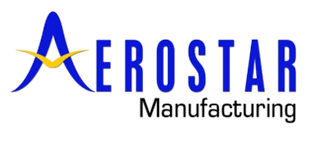According to Design ideas for the Built World:
1. Growing Use of Five- and Six-Axis Machines
Five-axis machines continue to become more compact and cost-effective, enabling many small manufacturers to take advantage of the more efficient CNC technology.
At the same time, six-axis machines, which arrived on the market in 2019, are also becoming more practical and popular. They provide additional axes of freedom over more conventional but simpler three-axis models.
The amount of time saved can be significant. According to one estimate, six-axis machines may help cut production time by as much as 75% on average. This allows them to improve manufacturing speed and efficiency, as well as help manufacturers mill more complex shapes without removing and adjusting the part being worked on.
2. Greater Accessibility of CAD/CAM Software
Over the past 10 years, the computer-aided design, modeling and simulation technology landscape has become increasingly democratized.
CAD/CAM software is more accessible than ever. It’s available at lower prices, and developers of these tools are making user-friendliness a higher priority. There is also a growing community of programmers and designers working to make the technology as accessible as possible.
The increasing power of computers and availability of cloud computing resources also means that, despite the high amount of computing power CAD/CAM software can require, designers don’t necessarily need high-powered computers to design parts for CNC machining. These tools, combined with other productivity-boosting strategies, can make CNC machines more efficient and improve returns for designers.
Computer-aided design’s increased accessibility could unlock powerful new benefits for small businesses and individual designers, who may have had to enlist the help of larger manufacturers in the past.
These changes are also part of a broader trend in the computer-aided engineering ecosystem. Simulation, finite element analysis (FEA) and computational fluid dynamics (CFD) software are also increasingly accessible to small businesses and individual designers.
3. Manufacturing-as-a-Service (MaaS) Becomes More Popular
With manufacturing-as-a-service, businesses that need production capacity but don’t want to do it in-house subscribe to a service offered by a central manufacturer. It typically owns a range of equipment, like 3D printers and CNC machines. With this approach, the subscriber only pays for the manufacturing capacity they need as they need it — helping to streamline the process and reduce associated costs.
MaaS provides subscribers with access to a wider range of tools, machines and manufacturing equipment, helping them become more agile and productive. MaaS can also serve as a backup to conventional, in-house manufacturing, offering resiliency against supply chain shortages and downtime caused by repairs or machine failure.
As small sector demand for manufacturing grows, MaaS will likely be essential in meeting emerging needs.
4. New Robotics Innovations
Collaborative robotics, a new approach to robot design that emerged in the late 2010s, may help manufacturers adjust to the growing labor gap and increased demand.
These cobots are built with safety features, like padded joints and force limiters, that make them safer for human workers. Unlike conventional robotics, they may not need a cage or similar precautions.
Because cobots are also generally lightweight and easy to reprogram, they can be quickly moved and repurposed for tasks as needed. This makes them a good fit for manufacturers that prioritize agility and flexibility in their workflows.
5. The IloT and Networked CNC Machines
New Industrial Internet of Things (IIoT) devices make it much easier for manufacturers to network CNC machines and other manufacturing equipment. These devices, which use the internet to send and receive data, can enable a range of new features for CNC machines — like remote monitoring of operations.
One popular application is predictive maintenance. With this approach, manufacturers use IIoT sensors to track the operational parameters of their CNC machines. Over time, it is possible to use gathered performance data to create predictive models that forecast when a device will fail or need maintenance.
This approach can help manufacturers improve on their standard preventive maintenance schedule. Typically, it will extend the lifespan of CNC machines and provide significant cost-savings on maintenance.
How CNC Technology Will Change Manufacturing
New challenges for manufacturers will likely spur innovation in CNC machining over the next few years. Six-axis CNC machines, computer-assisted design software and collaborative CNC robotics may help smaller companies improve productivity and stay competitive. At the same time, the growth of small-sector demand may drive new business models, like manufacturing-as-a-service.
These trends reflect current market needs and help manufacturers stay ahead of the curve.
